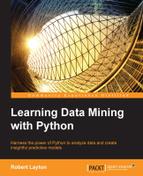There are many use cases for big data, in the public and private sectors.
The most common experience people have using a big-data-based system is in Internet search, such as Google. To run these systems, a search needs to be carried out over billions of websites in a fraction of a second. Doing a basic text-based search would be inadequate to deal with such a problem. Simply storing the text of all those websites is a large problem. In order to deal with queries, new data structures and data mining methods need to be created and implemented specifically for this application.
Big data is also used in many other scientific experiments such as the Large Hadron Collider, part of which is pictured below, that stretches over 17 kilometers and contains 150 million sensors monitoring hundreds of millions of particle collisions per second. The data from this experiment is massive, with 25 petabytes created daily, after a filtering process (if filtering was not used, there would be 150 million petabytes per year). Analysis on data this big has led to amazing insights about our universe, but has been a significant engineering and analytics challenge.

Governments are increasingly using big data too, to track populations, businesses, and other aspects about their country. Tracking millions of people and billions of interactions (such as business transactions or health spending) has led to a need for big data analytics in many government organizations.
Traffic management is a particular focus of many governments around the world, who are tracking traffic using millions of sensors to determine which roads are most congested and predicting the impact of new roads on traffic levels.
Large retail organizations are using big data to improve the customer experience and reduce costs. This involves predicting customer demand in order to have the correct level of inventory, upselling customers with products they may like to purchase, and tracking transactions to look for trends, patterns, and potential frauds.
Other large businesses are also leveraging big data to automate aspects of their business and improve their offering. This includes leveraging analytics to predict future trends in their sector and track external competitors. Large businesses also use analytics to manage their own employees—tracking employees to look for signs that an employee may leave the company, in order to intervene before they do.
The information security sector is also leveraging big data in order to look for malware infections in large networks, by monitoring network traffic. This can include looking for odd traffic patterns, evidence of malware spreading, and other oddities. Advanced Persistent Threats (APTs) is another problem, where a motivated attacker will hide their code within a large network to steal information or cause damage over a long period of time. Finding APTs is often a case of forensically examining many computers, a task which simply takes too long for a human to effectively perform themselves. Analytics helps automate and analyze these forensic images to find infections.
Big data is being used in an increasing number of sectors and applications, and this trend is likely to only continue.
